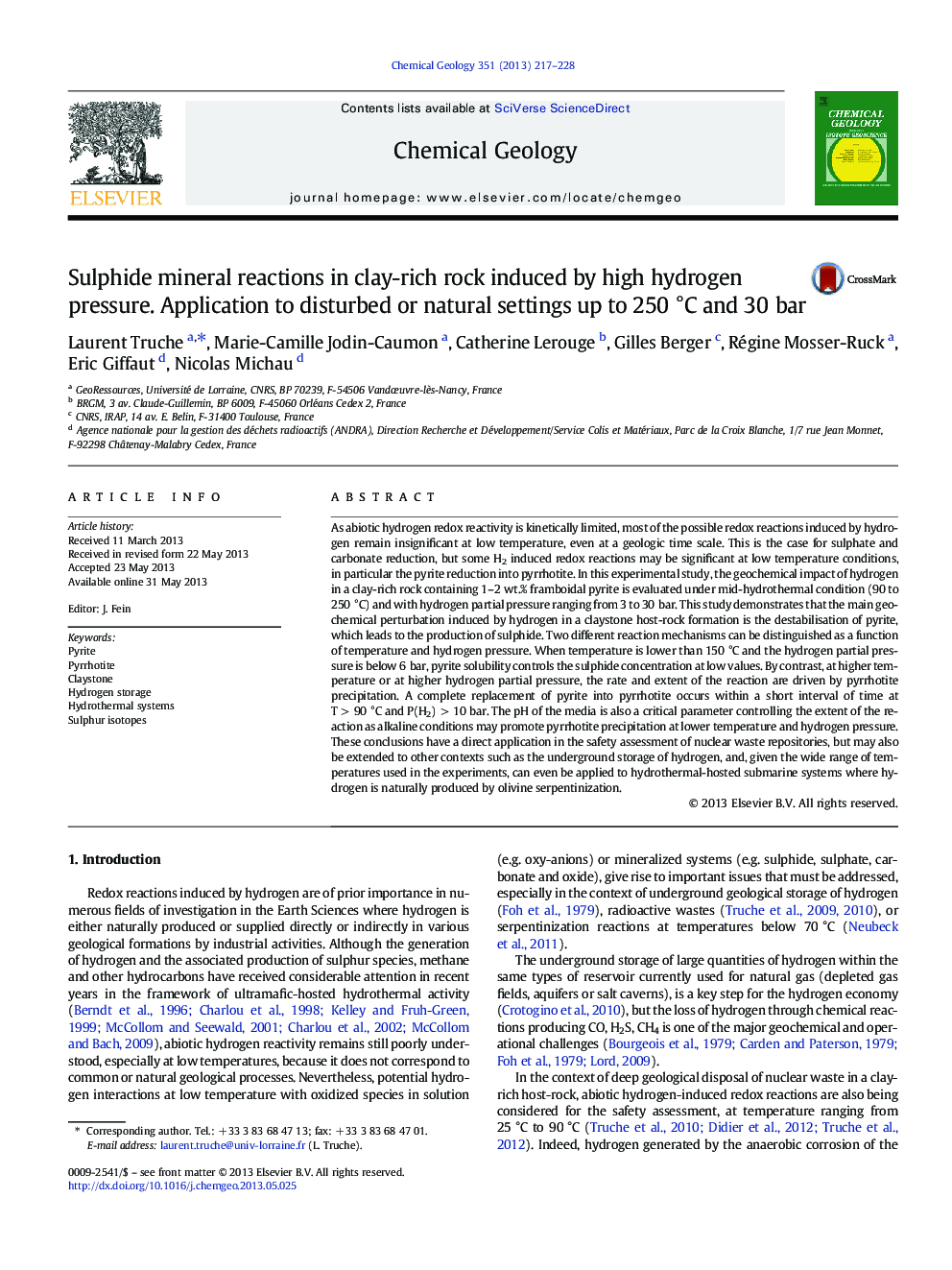| کد مقاله | کد نشریه | سال انتشار | مقاله انگلیسی | نسخه تمام متن |
|---|---|---|---|---|
| 6436919 | 1637618 | 2013 | 12 صفحه PDF | دانلود رایگان |

- Despite the low abiotic reactivity of hydrogen, some redox reactions may be considered at low temperature conditions.
- The main geochemical perturbation induced by hydrogen in a clayrock formation is the destabilisation of pyrite.
- Pyrite solubility or pyrrhotite precipitation control the sulphide concentration depending on temperature and P(H2).
- A complete replacement of pyrite into pyrrhotite occurs within a short interval of time at T > 90 °C and P(H2) > 10 bar.
- Alkaline conditions promote the pyrrhotite precipitation at low temperature and hydrogen pressure.
As abiotic hydrogen redox reactivity is kinetically limited, most of the possible redox reactions induced by hydrogen remain insignificant at low temperature, even at a geologic time scale. This is the case for sulphate and carbonate reduction, but some H2 induced redox reactions may be significant at low temperature conditions, in particular the pyrite reduction into pyrrhotite. In this experimental study, the geochemical impact of hydrogen in a clay-rich rock containing 1-2 wt.% framboidal pyrite is evaluated under mid-hydrothermal condition (90 to 250 °C) and with hydrogen partial pressure ranging from 3 to 30 bar. This study demonstrates that the main geochemical perturbation induced by hydrogen in a claystone host-rock formation is the destabilisation of pyrite, which leads to the production of sulphide. Two different reaction mechanisms can be distinguished as a function of temperature and hydrogen pressure. When temperature is lower than 150 °C and the hydrogen partial pressure is below 6 bar, pyrite solubility controls the sulphide concentration at low values. By contrast, at higher temperature or at higher hydrogen partial pressure, the rate and extent of the reaction are driven by pyrrhotite precipitation. A complete replacement of pyrite into pyrrhotite occurs within a short interval of time at T > 90 °C and P(H2) > 10 bar. The pH of the media is also a critical parameter controlling the extent of the reaction as alkaline conditions may promote pyrrhotite precipitation at lower temperature and hydrogen pressure. These conclusions have a direct application in the safety assessment of nuclear waste repositories, but may also be extended to other contexts such as the underground storage of hydrogen, and, given the wide range of temperatures used in the experiments, can even be applied to hydrothermal-hosted submarine systems where hydrogen is naturally produced by olivine serpentinization.
Journal: Chemical Geology - Volume 351, 2 August 2013, Pages 217-228